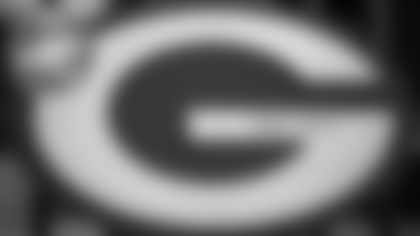Randy from Spencer, WI
With regard to your debunking of the Pro Football Hall of Fame's quote on Forrest Gregg, I found something interesting on a YouTube video of a 1982 Monday night, Cincinnati at San Diego Chargers game. Howard Cosell says in 1964 Vince Lombardi told him Forrest Gregg was: "The best player I ever coached." He walks it back saying Vince said it in his book, "Run to Daylight. Seems well established this quote is not there. I see W.C. Heinz assisted Coach Lombardi in writing "Run to Daylight." Could it be Howard heard it or thought he heard it from Mr. Heinz? No way to know. It does lead me to believe Howard's quote or misquote has led to this pernicious rumor. Say something loud enough or long enough, I guess. Thanks for all the hard work. I savor every morsel of it.
Thanks for pointing this out. It adds an interesting take to the conversation. But I'm still somewhere between certain and all but certain, it's a bogus quote. And I know others have agreed from Chuck Lane, Lombardi's publicity director; to the Milwaukee Sentinel's Bud Lea, who I believe was not only the most aggressive Packers reporter in Wisconsin in the 1960s but also the one Lombardi confided in the most; and Tom Olejniczak, son of Dominic Olejniczak, the Packers' president at the time, and later himself a member of the executive committee.
First, there's no such quote about Gregg or even anything close to it in Lombardi's 1963 book, "Run to Daylight." He didn't write that Gregg was "the finest player I ever coached," as the Pro Football Hall of Fame claimed in a release when Gregg was inducted in 1977; and Lombardi didn't write that Gregg was "the best player I ever coached," as Cosell said on that broadcast.
But your question impelled me to watch the 1964 "Run to Daylight" documentary again for the first time in years. The documentary was produced by Cosell, yet neither Lombardi nor narrator Horace McMahon nor anyone else said anything of the kind about Gregg.
In fact, the documentary focused on a number of veteran players on the 1964 Packers – Paul Hornung more than any other – while Gregg was barely mentioned. A little more than seven minutes into the documentary, there was a shot of Gregg and the narrator simply stated: "There you see Forrest Gregg – the picture ballplayer."
On the other hand, Hornung, who Lombardi later called "the greatest player I ever coached," was effusively praised in the documentary, despite coming off a season-long suspension for gambling. "When Hornung is in there, you can feel the confidence of that ball club," Lombardi gushed about Hornung's leadership.
Actually, the reference to Gregg was similar to what Lombardi wrote about him in his "Run to Daylight" book: "Marie calls Forrest a picture ballplayer and that's what he is."
I'm well aware that people in positions of power often share off-the-record comments with members of the media and trying to untangle the truth about a quote where the overwhelming evidence suggests it was fabricated is still an almost impossible task. But there's not even a hint to be found that Lombardi believed that or ever said anything close to it about Gregg in a public forum. And I would assume the Pro Football Hall of Fame people reached the same conclusion or they would not have deleted the quote from Gregg's profile at its website.
Without regurgitating all the other points I've made in the past on the subject, this is another that sticks in my mind as much as anything. It was something Jerry Kramer told me in a 2012 interview and that other Packers from the Lombardi years have confirmed.
Kramer: "Bob (Skoronski) had the best grades of anybody on the team. The grading day after day, year after year. Bob was the most consistent player on our team, and he had the grades. That's not my opinion. Those were the grades."
My reaction: Why then would Lombardi proclaim the other tackle to be his best player ever?
Al from Tulsa, OK
I think you might have missed a couple things in your column about Super Bowl XXXII. First, early in the game, John Elway couldn't hit the broad side of a barn with his passes, but Green Bay insisted on defending for pass rather than run, even though Terrell Davis was running rampant. I may be remembering incorrectly, but I seem to recall that was mentioned by one of the announcers. Second, in an interview that appeared on the Packers website several years ago, Dorsey Levens said several Denver players told him after the game they were thankful the Packers took the ball out of his hands in the second half because he was killing them in the first. Third, there were reports that the Packers were overly confident and also were not prepared to play in warmer weather. They did seem gassed later in the game. Why weren't the Broncos? I felt during the game and ever since that the coaches lost it. A fan at least since the 1960 championship game against the Eagles.
To be honest, I didn't pay close enough attention when I watched the replay to know whether the Packers persisted in playing pass defense over run defense early in the game. I can't imagine why they would. Was that in the second quarter when Davis sat out with his migraine? Elway ran around right end for a 1-yard TD on the Broncos' first play of the quarter and took on a knee on the last. In between, with Vaughn Hebron filling in for Davis, the Broncos passed on five of six offensive plays. Playing against the pass at that point seemingly would have made sense. Denver's rushing stats for the quarter were three carries for zero yards.
As for points one and two, I'd answer this way. I'm a believer in the philosophy, "do what got you here" in big games and get the ball to your playmakers.
If the Packers had an offensive edge in that game, it was that a 28-year-old Brett Favre was a better quarterback at that point than a 37-year-old Elway in his second-to-last season. Accordingly, Favre should have been the Packers' go-to guy down the stretch. Plus, as good as Levens was over the last part of the 1996 season and all of 1997, if the game was going to come down to Davis vs. Levens running the ball, Davis was the better back on a team with a superior running game.
Also, I'd ask was it actually true the Packers took the ball out of Levens' hands in the second half?
His rushing stats might suggest it: 12 carries for 62 yards, a 5.2 average in the first half; seven for 28, a 4-yard average in the second half. But that was largely dictated by Denver's go-ahead TD with 1:45 to play. Favre passed on all seven plays of the Packers' final possession, but four were completed to Levens for 39 yards, a 9.8 average, which was more than he was likely to gain running the ball.
Favre's stats by half were similar. In the first half, he was 13 of 19 for 127 yards with two touchdowns and an interception. In the second half, he was 12 of 23 for 129 yards with one touchdown and no interceptions.
Did the coaches lose that game?
Obviously, coaching can be a factor in any game, although I think it usually has more to do with preparation than in-game, flip-of-the-coin decisions. I find few things more inane than when game announcers and pundits criticize fourth-down gambles after the fact and cite analytics, where the league-wide percentage difference is small enough to raise all sorts of questions.
How often does a conversion from that area of the field actually lead to points? How often do failed attempts lead to huge swings in momentum the other way? Do the league-wide percentages apply to the two teams on the field? What about crowd noise? Do the percentages hold true whether you're at home or on the road? Are the percentages the same for games played in both a dome and outside? If it's outside, could a wet field or extreme heat, especially if a defense has been on the field for a long period of time, change the percentages?
All that aside, when Vince Lombardi told his players in the locker room after that 1960, 17-13 loss to the Eagles that he was one to blame for the defeat because his decisions to go for it on two fourth downs rather than take the likely points backfired, that's worth taking seriously.
And if you haven't forgotten about the consequences of those two decisions in the first big Packer game of your life, I'm not going to argue with you if your inherent tendency is to blame coaches rather than players for losses. I haven't forgotten those two stops by the Eagles either: Jim Taylor on a first-quarter run into the middle from the Eagles' 5 and Taylor again in the third quarter from the Eagles' 25.
That said, don't forget Bart Starr later insisted he was the one to blame for that loss because his counterpart, Eagles quarterback Norm Van Brocklin, made the big plays and he didn't.
So let the debate continue over Super Bowl XXXII. One thing for sure that supports your contention is that Denver's offensive game plan nullified LeRoy Butler's role, and he was the key to the Packers' defense that season.
As far as the two offenses, I have two distinct memories.
Blitz or no blitz, poor play selection or not, Favre when he was in his prime generally found helter-skelter ways to win big games in the closing minutes – but he didn't that day.
My other one is of Elway at 37, making the biggest play of the game, when – given a choice between getting snot-bubbled by a defender or pulling up and throwing a pass to avoid a big hit – he sold out and got helicoptered but gained eight yards on third-and-6 to set up a go-ahead TD late in the third quarter.
Hans from San Diego
I think you're on the spot with your evaluation of the Packers-Broncos Super Bowl, and I'll add one more that won't make it into the box score. As you likely remember, San Diego was experiencing a Santa Ana wind on the day of Super Bowl XXXII, and that hot, dry desert wind saps the energy out of anybody in it, but especially the big guys. The Packers D-line was both shorthanded and melting in the sun as the game rolled on. Ron Wolf himself said, "That was the day our D-line went away."
Very true. The temperature at kickoff was 59 degrees and there was only a light wind, but the relative humidity was 79 percent.
Denver guard Mark Schlereth said after the game that he could tell Gilbert Brown was running out of gas by the end of the first quarter. In Brown's case, he had reported to camp overweight, dealt with a series of leg injuries during the season and never really got in shape. Reggie White was 35 and had been troubled by back problems all year.
Therefore, I'm assuming they missed a lot of practice time and weren't in the best of shape. Combine that with White's age and having two other graybeards – Eugene Robinson, 34, and Seth Joyner, 33 – as defensive starters, the Packers hit the wall that day and early in the game, as you noted. In fact, NFL seasons are marathons, and I thought that defense had hit the wall weeks before the Super Bowl.

Chuck from Waterloo, WI
I noticed the photo of Verne Lewellen shows him with his right leg high over his head. In the story George Calhoun referred to Verne as "Lefty" Lewellen. Did he throw left and punt right? I've never seen that before. Maybe that's the secret of his remarkable punting prowess.
Great question because the answer probably isn't what you're expecting. No, he didn't throw left and punt right. He also threw with his right hand. Before joining the Packers, Lewellen signed with the Pittsburgh Pirates and it was reported at the time, "The Pittsburgh acquisition is a right-handed 6-footer and possessor of a speedy crossfire curve, which attracted a Pirate scout who saw Lewellen in action last summer."
So why did Calhoun call him "Lefty?" He only did it early in Lewellen's rookie year, so perhaps Calhoun witnessed him using his left hand in a way that might have suggested he was a southpaw or maybe ambidextrous. But my best guess is that Lewellen was playing left halfback, and his position was the reason for the reference.
Kendal from Madison, WI
I recently noticed that you mentioned we had an incorrect detail about Mike Michalske listed in the Wisconsin Historical Society's "This Day in Wisconsin History." I want to let you know that we have corrected the inaccuracy.
The Packers appreciate it.
Randal from Klamath Falls, OR
You answered a question several weeks ago about championships now vs. before the Super Bowl era. I'm so tired of people saying it was easier back then because of the fewer teams. Well, fewer teams mean the talent pool is much more concentrated and the teams, probably top to bottom, were probably better. Can you imagine an NFL with just 12 teams today and how scary good each of them would be? Anyway, I wanted to vent at the ignorance of people who think it's harder today to be a champion because there are more teams. Thanks for all your great articles.
Plus, there were no second chances before expanded playoffs came into being in 1970. Three years earlier, the Los Angeles Rams and Baltimore Colts each finished 11-1-2 and atop the NFL Western Conference Coastal Division, but the Colts were eliminated from postseason play by a regular-season tiebreaker.
Thanks for being a loyal reader and a fellow venter.














